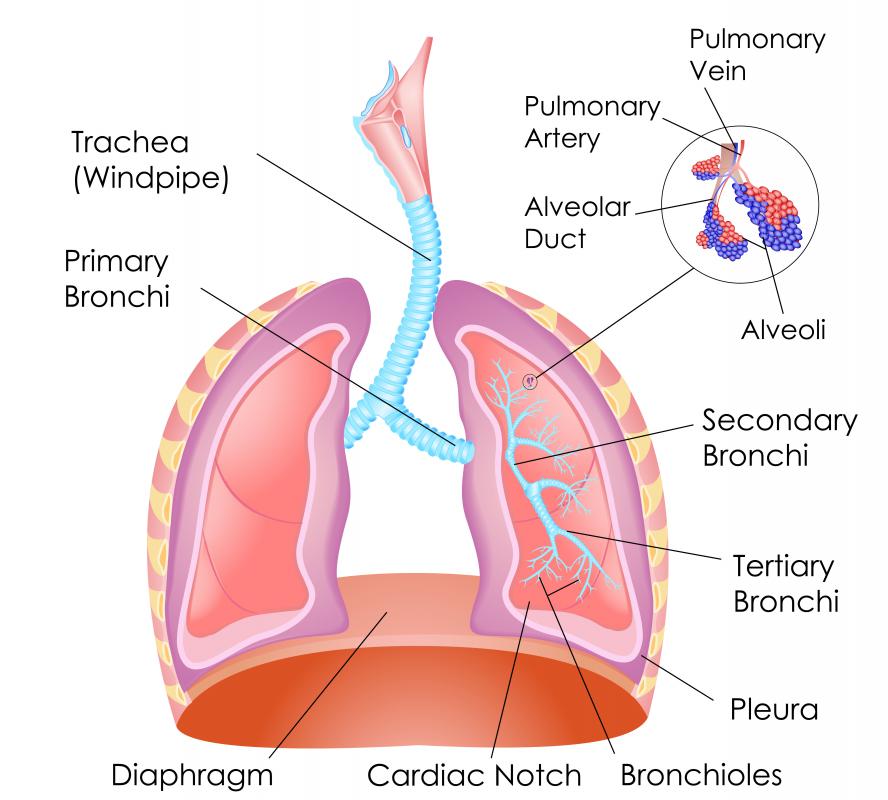At WiseGEEK, we're committed to delivering accurate, trustworthy information. Our expert-authored content is rigorously fact-checked and sourced from credible authorities. Discover how we uphold the highest standards in providing you with reliable knowledge.
What Are the Organs of the Respiratory System?
There are a number of important organs of the respiratory system. This collection of organs and structures is important because it allows people to obtain oxygen and expel carbon dioxide, a waste product of metabolism. Elements of the respiratory system include the nose, the mouth, the pharynx, the larynx, the trachea, the bronchi, the lungs, and the muscles used to breathe in and out.
Although many people associate the nose with the sense of smell, it can actually also be considered one of the organs of the respiratory system. People breathe in and out through the nose. It helps to warm and moisten the air breathed in. The nose hairs present inside of this organ help to trap particulate matter, and prevent it from entering the lungs. Breathing air in through the mouth also warms and humidifies the air.

After air is taken in through the nose, it passes through a number of other respiratory system organs before reaching the lungs. It first enters the pharynx, which is found at the back of the oral cavity, and is located at the top of the throat. Air then enters the larynx, or the voice box. The entrance to the larynx is protected by a flap of tissue known as the epiglottis, which helps guide food to enter the digestive tract instead of the respiratory system.

Air then enters what is officially known as the tracheobronchial tree, another of the organs of the respiratory system. These airways originate with the trachea, which is commonly known as the windpipe. The trachea breaks into two large bronchi in the region of the sternum. Large bronchi further branch into smaller bronchioles. All of these airways are lined with a special type of tissue that helps to warm the air and rid the respiratory tract of unwanted particulate matter.

When people think of the organs of the respiratory system, their first response is typically to think of the lungs. These organs are responsible for absorbing oxygen and releasing carbon dioxide. The lung tissue is made up of small sacs of tissue called alveoli, which contain tiny blood vessels in their walls that allow for gas exchange.
Many people consider the muscles used to help the lungs expand and deflate to be another of the organs of the respiratory system. The most important muscle is the diaphragm, which is located under the lungs, and separates the chest from the abdomen. Other muscles — including the muscles of the abdominal wall, the muscles located in between the ribs, and the muscles in the neck — also help support the action of breathing.
AS FEATURED ON:
AS FEATURED ON:













Discuss this Article
Post your comments